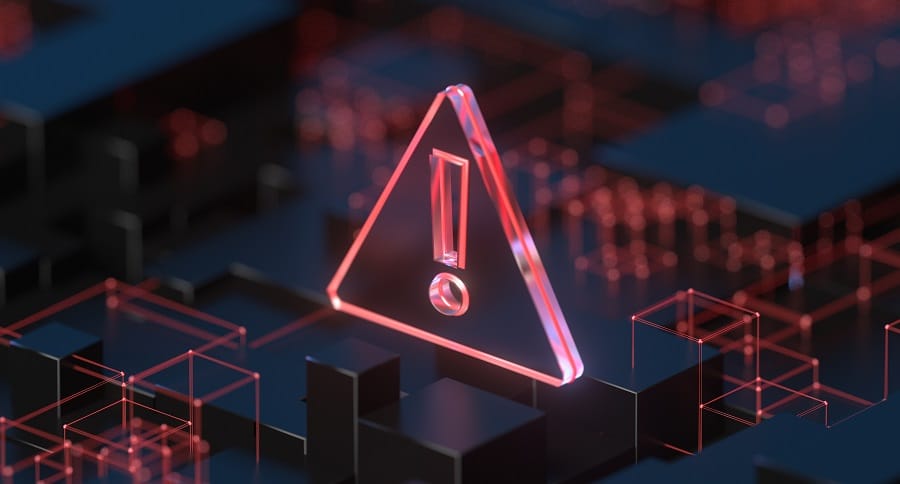
First, keep reading to learn about common phishing attacks and the primary ways attackers gain access to an organization and steal sensitive data. Then, review our curated list of the 13 best phishing protection solutions to help your employees quickly detect phishing threats and react accordingly.
Common types of phishing attacks
Phishing is a type of social engineering attack in which an attacker uses psychology and trickery to convince their target to do what they want. These attacks come in various forms, with the following types as the most common:
- Clone phishing: An attacker copies written communication from a business but substitute links with malicious ones. The trickery is that the cloned phishing emails look legitimate to their targets, fooling them into clicking a link.
- Pharming: An attacker redirects internet users from a specific, legitimate site to a malicious one by changing the Domain Name System (DNS) table in the web server that hosts it. This form of phishing makes it possible to include legitimate-looking links in phishing emails.
- SMS phishing or smishing: Attackers use phishing techniques over SMS messages. It takes advantage of texting communications and the common use of link shortening in texts. This combination makes it easier to conceal malicious links within a message.
- Spear phishing: Hackers research and then target an individual or small group. Then, based on what they learn, they develop a personalized phishing pretext with the goal of a higher probability of success than a general attack.
- Voice phishing or vishing: These phishing attacks are performed over the phone by a “Visher” pretending to be, for example, customer service or government agency representative. They then try to trick their target into providing access to their computer—revealing sensitive information—or sending money to the attacker.
Whaling: These spear-phishing attacks target senior executives in an organization. They trick targets into initiating bank transfers or authorizing employees to take similar actions.
What is phishing protection
Phishing is one of the main approaches cyber attackers try to gain access to an organization and steal sensitive information. Here are a few ways you can protect your company against phishing attacks.
Awareness training
Because phishing attacks target an organization’s employees, employees need to understand how these threats work, know what to look for, and react accordingly to protect against them. Through regular cyber awareness training, employees learn how to identify malicious URLs and handle an email with a suspicious attachment. They also learn the risks of revealing passwords and other sensitive information and what to do when they receive a potential phishing email.
Phishing simulations
Hands-on experience is invaluable for learning and retaining the information that’s presented, especially for detecting phishing emails. Phishing simulations teach employees how to deal with phishing attacks through real-world practice, enabling greater retention. These programs are most effective when they occur regularly and at greater frequency and focus on threats employees are most likely to face based on their job role, department, or location. They also enable you to identify and reduce the number of high-risk employees. Once employees demonstrate awareness of a specific threat, you adjust simulations to address a different threat.
Anti-phishing software
To reduce the burden of phishing detection on employees, anti-phishing software can help. This software inspects the content of emails, websites, and other ways to access data through the internet and then warns the user of a threat. This safety net can also block likely phishing emails before they reach a person’s inbox.
Why phishing protection is important

Phishing training and simulations give employees the knowledge, skills, and confidence they need to detect phishing threats. By providing this training, you enable them to more rapidly identify phishing attacks before they cause significant harm to your organization, brand, assets, and customers.
The 13 best phishing protection solutions
Phishing protection is an essential component of every enterprise security strategy. Here are our top picks for the best phishing protection solutions available.
1. Barracuda PhishLine
Barracuda PhishLine offers hundreds of phishing templates based on real-world threats and supports vishing, smishing, and found physical media. This solution also offers email protection solutions to detect and block malicious emails.
2. CybeReady BLAST
CybeReady BLAST—Behavioral Adaptive Phishing Simulation and Training—automatically suggests phishing simulations for an organization and supports 35 languages for localization of global employees. Simulation content can be customized for each department and employee competency.
3. Cofense
Cofense PhishMe is a software-as-a-service (SaaS) platform that provides an automated selection of phishing content, including prebuilt emails, landing pages, and attachments. Pretexts are searchable and include filters for emails that slip past secure email gateways.
4. DuoCircle
DuoCircle offers an email scanning and phishing prevention solution. It performs real-time link checking and automatically blocks access to known bad or malicious websites on user devices.
5. FirstPoint
The FirstPoint mobile security solution provides protection against smishing messages at the cellular network level. It offers centralized management and protection for SIM-based devices that are connected to cellular networks, preventing threats before they reach mobile devices.
6. Hornetsecurity
Hornetsecurity – Hornet.email is a cloud-based corporate communications platform with integrated spam and malware protection. Hornetsecurity has a 99.99 percent spam and virus detection rate and defends email servers against distributed denial of service (DDoS) attacks.
7. Ironscales
Ironscales offers a one-click generation of phishing campaigns by using templates based on real-world attacks. The Ironscales Advanced Threat Protection solutions identify and block emails that contain malware, malicious URLs, and business email compromise (BEC) attacks.
8. Kaspersky
Kaspersky offers phishing simulation and email protection solutions for common email platforms. Email protection includes the detection of malicious URLs. Also, Kaspersky antivirus protects against email-borne malware.
9. Mimecast
Mimecast Secure Email Gateway protects against spear phishing, malware, and other email threats. Its phishing simulations capture user clicks, number of views, and other metrics.
10. PhishLabs
PhishLabs email protection uses crowdsourced information from users who have reported emails as suspicious or malicious. The company also offers security awareness training that includes phishing simulations based on industry-specific pretexts.
11. PhishProtection
PhishProtection’s solutions include email protection and phishing simulation. Organizations can conduct simulations by using a combination of customizable pre-built and user-defined templates that are customizable to meet an organization’s needs.
12. SlashNext
SlashNext’s patented SEER AI identifies and blocks spear phishing, as well as other social engineering and email-borne attacks. SEER boasts a 99.99 percent Zero-Day threat detection rate and a 1 in a million false positive rate.
13. TitanHQ SpamTitan
TitanHQ SpamTitan provides protection against phishing, spam, and other email-based attacks. It protects against whaling, spear phishing, and IP blacklisting by scanning inbound and outbound traffic in real-time.
Stop phishing attacks before they happen

- Provides real-world simulations right in the daily workflow of your employees
- Enables you to customize simulations to the unique needs of your employees
- Provides advanced analytics to help you gauge employee success and identify high-risk groups
Empower your employees to stand up to phishing attacks and stop them before they happen with the best phishing protection solution for your organization.

















